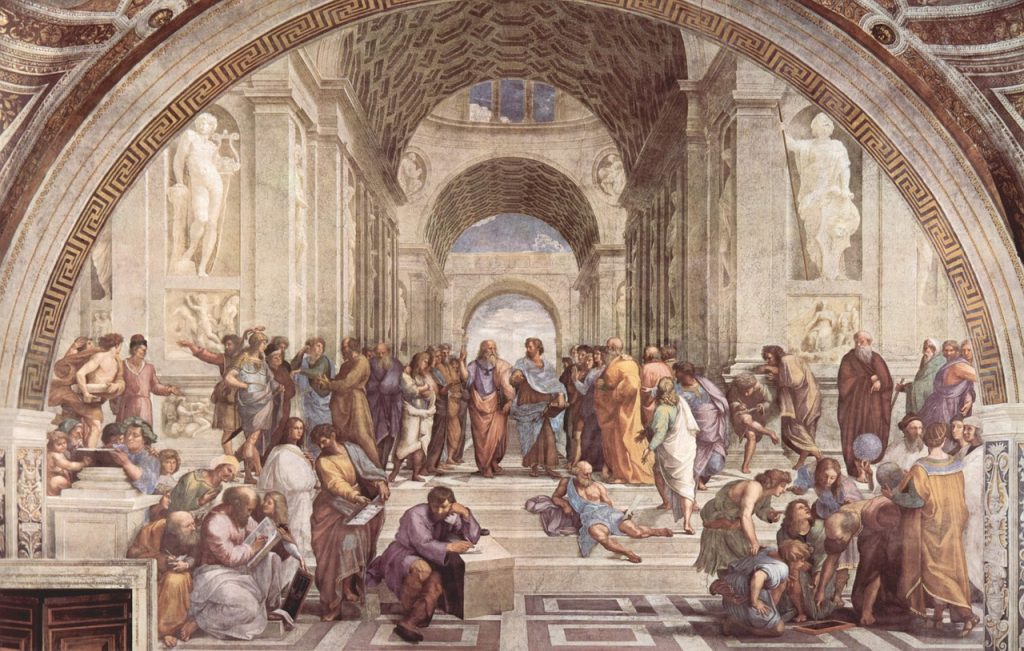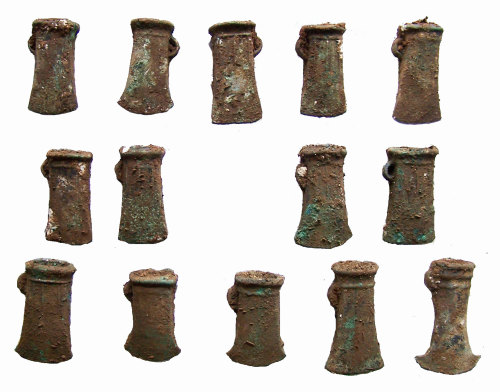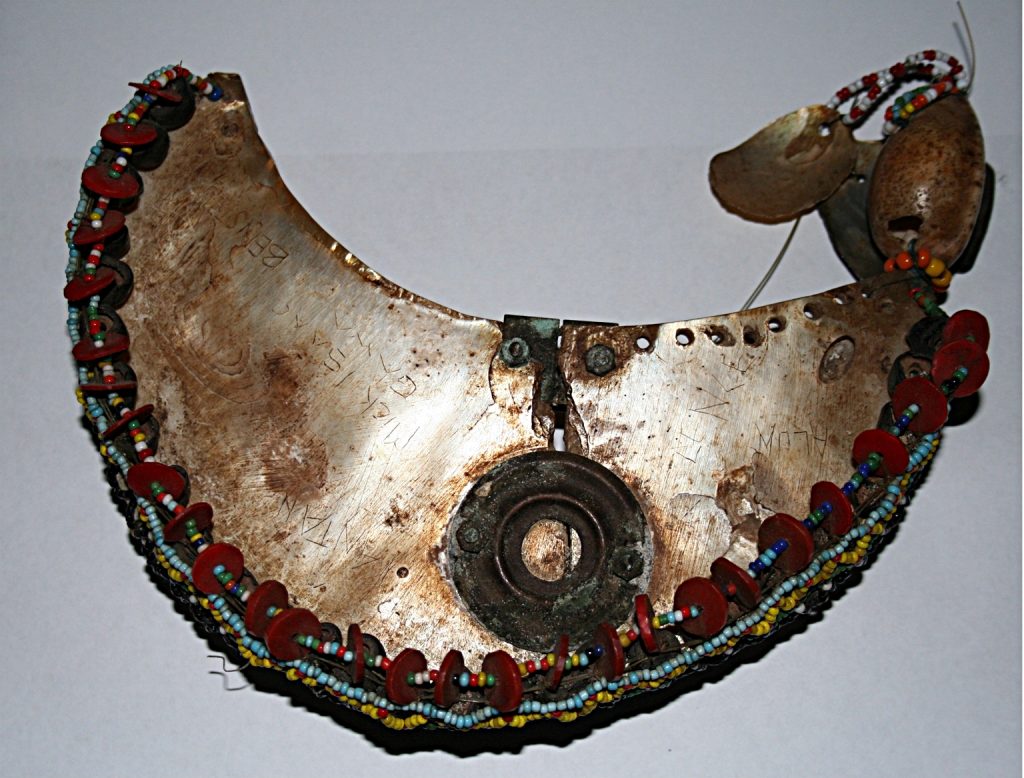Five Alternative Currencies For When the Pound Finally Sinks to the Bottom of the Sea
Dirty Science by Dr Brenna HassettOne of the major benefits of archaeological science is that we are able to provide a very long-term look at human society.

The short-termism of contemporary politics, where it is only necessary to believe any given thing until the next electoral cycle, can lead to a kind of existential despair in the observer. When it comes to the politics of nationalism, isolationism, populism, and other -isms of an apocalyptic bent, it’s starting to feel like we’ve watched this car crash before. Well, while there are many fun and unique aspects to the political car crash the United Kingdom is currently staging,[i] the experience of collapsing cooperation is certainly nothing new to our species. Heck, we don’t even remember what the Denisovans looked like, and we were close enough with them that we’re still carrying their DNA around.
Bonus academic waffle for those in the front row: ‘collapse’ is actually a highly charged term in archaeology, with many clever persons arguing that the idea of collapse as a total catastrophic social meltdown where everybody dies is a bit melodramatic. Even the ecologically-driven social collapse of Maya society of the 8th century that sold billions of copies in hardback for Jared Diamond may have been greatly exaggerated.[ii] While Maya society may have changed considerably in the intervening millennium, there are still a good seven million speakers of Maya languages still alive to this day. On an archaeological scale, societies ‘collapse’ fairly often, and they don’t have to take everyone down with them.[iii] What was a bad day for Rome was a great day for the Visigoths; vast chunks of the 14th century European population dying did terrific things for wage growth.

Raphael liked to paint his peers discussing wage growth in nearby cities.
However, that doesn’t mean we shouldn’t be thinking about alternatives as the super-hold hairspray that binds our structures of government together starts to give way to more and more boisterous flyaways. What are we going to do when the pound finally sinks to the bottom of the Channel? Human history gives us a cornucopia of ways to organise trade without resorting to facing up to plummeting exchange rates and dealing with the fact that the average UK wage is about to be back down to three chickens in a sack per annum. So here are five other options, real alternatives drawn from the archaeological and ethnographic record.
The Cosmic Shambles Network relies on your support on pledges via Patreon so we can continue to provide great, new, exciting content without the need for third party ads or paywalls.
For as little as $1 a month you can support what we do and get some great rewards for doing so as well. Click the Patreon logo to pledge or find out more.
- Old British Money (Roman Empire – 1971).
This one is a no-brainer. The idiosyncratic British system of pounds, shillings, pence, and other words you only hear in period drama[iv] makes perfect sense as the new mode of exchange for the UK, despite the fact that it makes very little sense at all to anyone born after about 1970. The system of 12 pence to the shilling and twenty shillings to the pound, with added sub-divisions, is the ultimate Brexiteer currency – anarchic in its disregard for orderly arithmetic, or anyone unwilling to memorise the 12 times tables. Plus, saying things like ‘Gi’s us a ha’penny mister’ sounds like a fun way to spend a dystopic future.
- Pub tokens (17th century AD. Mostly).
This is not the UK’s first cashless rodeo. England appears to have run out of change some time in the 17th century, the unforeseen consequence of leaving monetary policy to people who apparently had never tried to buy a drink in a pub. Never a culture to be separated from the chance to vend alcohol, enterprising tavern-keeps (and coffee shop houses, and bakers, and actually, quite a lot of businesses) resorted to striking their own trade tokens in small denominations, complete with logos for the illiterate. Not only are the tokens a fascinating insight into the murky world of early modern commerce, they are also savvy marketing – if you’ve got credit at the ‘Seven Stares’, you’re hardly going to drink anywhere else, are you?

Pub token for the ‘Seven Stares’ on Basing Lane, 1666 (Pic: Surrey County Council)
- Bronze hoards (2300 BC – 700 BC. Ish).
Now this one is tricky for weight reasons, but the UK has a lot of past form in using metal objects as a kind of currency. In a society where ‘wealth’ wasn’t tied up in house prices – roundhouses go into negative equity pretty fast when your hamlet is sacked – inhabitants of these isles used to stockpile metal. We know this, because we find the stockpiles all over – starting from perhaps 4,500 years ago, from the far north of Scotland to southern England. Hoards of bronze axes of remarkably similar size and shape, some of them very handsome but too brittle to ever be used, seem to have been planted all over the landscape thousands of years ago for reasons we’re still not entirely sure about. These are actually found across the European continent though – so maybe this is a bit too redolent of the hated Euro to work in a post-Brexit UK.

Bronze Axes and Ingots (Pic: The Portable Antiquities Scheme )
- Kularing (Some Time Ago – Within Living Memory).
Many people may not be familiar with the concept of wealth embodied in the epic Kula exchange cycles of Papua New Guinea’s Trobriand Islands, but basically, its influencer culture, with canoes and socio-economic bonds, instead of clicks and ‘likes’. Historically, islanders ritually exchange ‘gifts’ of special beaded jewellery with trade partners, rotating red armbands to the north and white ones to the south so that the every social connection is mapped in bichrome, and the more people you know, the better off you are. Exchanges involve a lot of conversation on the level of ‘oh this old thing?’ and nothing ever makes money so it should be very comfortable for the remnant UK population.

Kula bracelet (Pic:Brocken Inaglory)
- An actual sack with three chickens. (Timeless).
Honestly, what’s not to like about this? It’s as easily divisible as farthings (what?) ever were, plus it has a built-in interest generator. Also, you could probably get a discount for bringing your own reusable sack.
[i] The involvement of bananas of uncertain bent and vigorously-waved smoked fish are novel, to say the least.
[ii] Yet another bonus point for the Mark Twain school of thought in scientific theory.
[iii] It is a good idea to be ‘one of the people’ in the event of social collapse.
[iv] Thrupenny???
 Dr Brenna Hassett is an archaeologist specialising in the analysis of human remains as a researcher at University College London and a Scientific Associate at the Natural History Museum London. She has dug on sites across the globe, from Greece to Egypt to Thailand and beyond. She is one quarter of The Trowelblazers group. Her first book, Built on Bones, was published in 2017 and she is currently writing her second, due for release in 2021. She is on Twitter at @brennawalks
Dr Brenna Hassett is an archaeologist specialising in the analysis of human remains as a researcher at University College London and a Scientific Associate at the Natural History Museum London. She has dug on sites across the globe, from Greece to Egypt to Thailand and beyond. She is one quarter of The Trowelblazers group. Her first book, Built on Bones, was published in 2017 and she is currently writing her second, due for release in 2021. She is on Twitter at @brennawalks
The Cosmic Shambles Network relies on your support on pledges via Patreon so we can continue to provide great, new, exciting content without the need for third party ads or paywalls.
For as little as $1 a month you can support what we do and get some great rewards for doing so as well. Click the Patreon logo to pledge or find out more.
If you would like to reuse this content please contact us for details
Subscribe to The Cosmic Shambles Network Mailing list here.


“”The system of …. ten shillings to the pound….”
I think you mean 20 shillings to the pound!
Good spot. Corrected! (Ed)